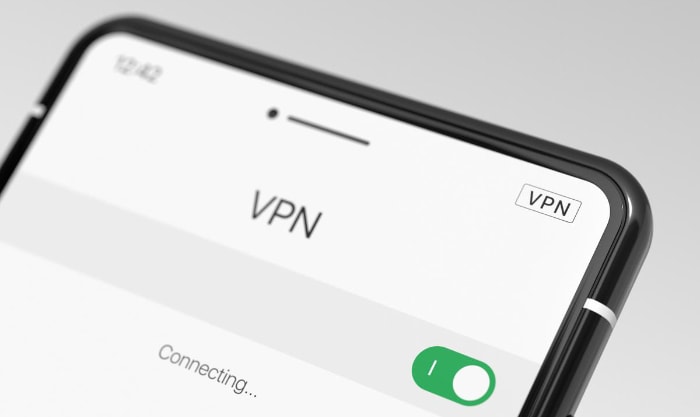What Is a Network Security Key? Wi-Fi Safety Made Clear

Connecting to Wi-Fi usually feels as simple as entering a password, but there’s much more happening behind the scenes. That string of characters, often called a network security key or WPA key, acts as both a digital handshake and a lock, steering who gets in and how safe your data stays along the way. From coffee shop hotspots to your smart home devices, modern life relies on these security measures to keep hackers at bay and private information secure. Curious about how these protections work, why different wireless protocols matter, or what steps you can take to keep your connections safe?
Core Concepts and Functionality
At the heart of every secure Wi-Fi connection is a system designed to keep intruders out and your information safe from prying eyes. Network security keys do far more than simply grant access to your home or office network; they also guard the flow of information so that only trusted users and devices can communicate.
Authentication vs. Encryption
Authentication and encryption are two essential security mechanisms that serve different purposes but work side by side to protect your online activity. Authentication is all about making sure only the right people or devices can join a network. When prompted for a Wi-Fi password, the network checks if your credentials match those expected for access. Only authorized users receive a green light, helping to prevent unwanted guests from joining.
Encryption, on the other hand, is focused on the privacy of the information shared over the network. Once a device has been authenticated, encryption scrambles the data that travels between your device and the router. Anyone trying to intercept that data will only see unreadable text, keeping sensitive information such as messages, emails, or bank details safe during transmission. While authentication controls who gets in, encryption ensures that what is sent stays confidential throughout its journey.
Types of Security Keys
Network security can be accomplished using several types of security keys, each tailored to different environments and levels of protection. Pre-shared keys, often abbreviated as PSKs, represent the familiar Wi-Fi passwords used in homes and small offices. These keys are set up on both the router and connecting devices, making network access straightforward for family members or trusted guests.
For larger organizations or settings requiring more control, enterprise keys step in. Utilized in systems such as 802.1X with RADIUS servers, these keys work by authenticating each user individually. Employees may log in using unique usernames and passwords, allowing network administrators to track access and easily revoke privileges if necessary. This approach offers tight security and greater flexibility for managing many users.
Hardware-based security keys take protection a step further by providing physical devices like tokens or USB fobs. These keys might generate codes or require physical confirmation before granting access, making them highly resistant to remote hacking attempts. Such hardware is often found in environments demanding maximum security, adding another layer to network defenses and making unauthorized access significantly more difficult.
Encryption Protocols and Standards

Protecting wireless networks depends not only on the strength of passwords but also on the security protocols that shape how information gets encrypted and managed. Over the years, Wi-Fi encryption protocols have progressed through several generations, each offering stronger safeguards against cyber threats.
Protocol Evolution
Wi-Fi security protocols have undergone significant changes since wireless internet first became widely available. The earliest protocol, WEP, relied on static encryption and provided only basic protection. Its design flaws allowed hackers to crack it with minimal effort, making it obsolete today.
WPA arrived as a response to these shortcomings, introducing dynamic keys for each session and greater complexity. While WPA was a step forward, it still fell short of fully safeguarding networks as attackers developed new techniques to exploit its weaknesses.
The introduction of WPA2 marked a turning point for wireless security. By implementing AES encryption, WPA2 offered robust protection and became the standard for homes and businesses around the world. Its wide adoption made wireless connections much harder to compromise.
WPA3 now leads the pack, bringing advanced features to the forefront. Forward secrecy, improved password-based authentication, and resistance to brute-force attacks set WPA3 apart from its predecessors. The protocol also ensures that each session is uniquely protected, even if a password is exposed at a later time.
| Protocol | Main Advantages | Security Level |
| WEP | Static encryption, easy setup | Obsolete, easily hacked |
| WPA | Dynamic session keys, improved security | Moderate (replaced by WPA2) |
| WPA2 | AES encryption, strong protection | High (widely used and trusted) |
| WPA3 | Forward secrecy, advanced authentication | Highest (resistant to modern attacks) |
Why WPA3 Matters
WPA3 sets a new standard for Wi-Fi security, going well beyond simple password protection. Its modern approach includes QR code or NFC-based login methods, streamlining device connections while avoiding mistakes that can lead to vulnerabilities. With enhanced resistance to offline attacks, hackers cannot easily guess passwords through repeated automated attempts. Even if someone captures data during a network session, WPA3’s forward secrecy prevents that information from being decrypted later.
Another important benefit comes in the form of secure session management. WPA3 automatically protects users against many common types of attacks, even when using simpler passwords. Support for more secure connections between IoT devices and traditional networks further reinforces safety. With so many household gadgets now relying on Wi-Fi, having robust defenses is more important than ever, and WPA3 delivers on that need with practical tools designed for the modern world.
Practical Implementation and Challenges

Connecting devices to a wireless network can feel effortless, but even simple steps sometimes present obstacles. Ensuring a stable and secure connection involves more than just entering a password. Correct configuration, careful troubleshooting, and proactive habits all play a role in keeping your network both accessible and safe.
Device Connectivity
“Security key not correct” errors are among the most common stumbling blocks when joining a network. This message can stem from a few sources. Double-checking for accidental typos, such as leaving caps lock on or entering extra spaces, can solve many issues. Devices may also save outdated passwords or credentials, which can lead to repeated failures; clearing these cached settings and re-entering the correct information often resolves the problem.
Finding the right security key can also present challenges, especially for those setting up a new device or network. Many routers display default Wi-Fi passwords on a label, typically found on the underside or back of the device. Alternatively, logging into the router’s admin interface via a web browser gives access to current network settings, including the active security key. Taking the time to reference these details helps avoid guesswork and unnecessary frustration.
Best Practices
Strong habits turn a secure network into a resilient one. Rotating Wi-Fi passwords periodically reduces the chance of unauthorized access, especially if an old password has been shared or stored on multiple devices. Selecting robust passphrases, such as mixes of letters, numbers, and symbols, provides a stronger defense against brute-force attempts and hacking tools. For example, a password like “T1m3T0W3r#2025” is much harder to breach than a simple word or short string of numbers.
Regularly reviewing connected devices and removing unfamiliar entries keeps the network clean and secure. Limiting who receives the password, along with adjusting guest network functions to isolate visitors from sensitive files or settings, adds extra layers of confidence. Adopting these straightforward habits allows users to enjoy the convenience of wireless connectivity without exposing themselves to unnecessary risk.
Security Risks and Threats

A strong Wi-Fi password offers a solid front line, but network security faces constant pressure from a variety of threats. Attackers are always searching for vulnerabilities, sometimes with powerful automated tools or by targeting devices most users would never suspect. Knowing which risks are most common and how they operate can make it much easier to keep your personal data and devices safe, even as technology continues to evolve.
Common Threats
Unsecured networks often attract malware and ransomware, especially in public places where connections may not require a password. Cybercriminals can intercept data traveling over such networks, capturing private information or installing malicious software for later attacks. Sensitive details, from bank logins to emails, are all at risk if traffic is not adequately protected by encryption.
Password attacks remain a persistent danger. Brute-force techniques, where attackers rapidly try thousands of password combinations, and credential-stuffing attacks, which use stolen username and password pairs found elsewhere on the internet, highlight the need for strong, unique passwords. Simple or reused network passwords invite quick and disruptive break-ins.
Smart home devices and other Internet of Things (IoT) equipment introduce their own vulnerabilities. Devices ranging from security cameras to connected light bulbs often lack robust security settings by default. Attackers may exploit weak credentials or outdated firmware, turning these devices into entry points for larger network breaches or even using them to launch attacks against other networks.
Case Studies
Real-world security incidents have shown how weak or default passwords can trigger devastating results. For example, attackers have gained access to home cameras, routers, and business networks simply because default login credentials were never changed. Once inside, intruders can steal sensitive files, monitor traffic, or use the network to spread malware.
Widespread breaches have also occurred when attackers targeted companies that failed to update their Wi-Fi security settings. In some cases, the use of outdated protocols allowed hackers to bypass standard protections entirely. Personal data, customer information, and even critical infrastructure have all been exposed due to overlooked weaknesses in security keys or poorly configured devices.
These events act as powerful reminders that strong, unique passwords and diligent security practices make a real difference, not just for protecting individual devices, but for preserving the privacy and safety of everyone connected to a network.
Advanced Security Strategies

Basic password protection forms just one layer of network defense. As cyber threats grow more sophisticated, a multi-faceted approach has become essential. Combining traditional tools with cutting-edge solutions helps protect sensitive data from a wide spectrum of risks.
Layered Defense
Building a robust network starts with multiple protective barriers. Firewalls serve as a digital gatekeeper, monitoring and filtering the traffic that moves in and out of your network. They block unwanted intrusions and help prevent malicious software from spreading. Intrusion detection systems add another dimension by continuously scanning for suspicious activities or indicators of compromise. If anything unusual arises, these systems can issue alerts or even take swift action to minimize potential damage.
VPNs contribute to secure remote access, especially as remote work and mobile connectivity become standard. Connecting through a VPN encrypts your internet activity, creating a secure tunnel between your device and its final destination. This encrypted link keeps personal and business data safe from snooping, even on public Wi-Fi.
Next-Gen Tools
Newer security technologies are reshaping how users and organizations safeguard access. Hardware security keys, such as those from Yubico or Google Titan, require a physical device to authorize logins. This simple addition makes unauthorized access nearly impossible, even if a hacker has stolen your password. Combined with standard credentials, hardware keys provide strong two-factor authentication that blocks phishing and interception attacks.
Artificial intelligence has begun playing a crucial role in defending networks. AI-driven anomaly detection tools scan traffic patterns in real time, searching for unusual behaviors that may indicate an attack. If a device suddenly tries to communicate in a way that looks suspicious or out of routine, the system flags or blocks the activity quickly, helping to stop breaches before they cause any real harm.
Network Segmentation
Smart network design reduces overall risk by separating devices into distinct zones. Segmenting the network, especially when it comes to IoT equipment, limits the consequences if one device is compromised. Placing smart thermostats, cameras, or other connected appliances on their own section of the network means that even if a vulnerability is exploited, access to more sensitive devices is blocked. This structure not only helps contain potential damage but also makes monitoring and controlling traffic far more manageable.
Proactive planning and the right combination of security technologies turn your network into a much harder target for attackers. Blending traditional strategies with the latest tools helps ensure that both common threats and advanced attacks are kept at bay.
Conclusion
Network security keys serve as the backbone of safe wireless connections, anchoring both authentication and encryption to protect every bit of your digital life. Their role extends far beyond simply letting devices connect, they actively guard your private data from interception and keep out unwanted intruders. The standards and strategies discussed throughout this article highlight how even a small gap, like a weak password or outdated protocol, can become an open door for cyber threats.
Upgrading to WPA3, choosing strong, unique passphrases, and staying alert to unfamiliar devices all make a significant difference in defending your home or business network. By embracing these practical steps and keeping your security practices up to date, you give yourself and everyone who connects a much greater degree of safety and peace of mind. Your network is only as strong as its weakest link; make every connection count.


